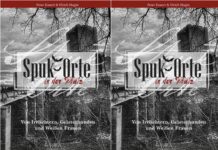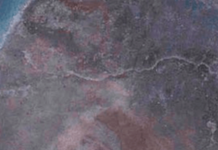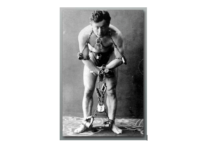HYSTERICAL TALES FROM ASIA AND ELSEWHERE
A story in the Times of India that an unnamed 65 year-old (or in some reports a 62 or 68 year-old) man staying at an Ashram in India died after suffering chest pains on a night out at the cinema to see the Conjuring 2 in Tiruvannamalai Town, South West India, on Thursday, 16 June 2016 swiftly went round the world.
Soon after it was claimed that his body had vanished….a detail which might boost one’s scepticism or sense of horror, depending on one’s point of view.
Meanwhile, social media networks, particularly in Indonesia have been sharing Conjuring 2 related items, including a film clip of a person supposedly possessed by after seeing the film. In fact, it was an item posted in 2013 and like all such other claims has to be treated with caution until some prima facie evidence or corroboration is produced.
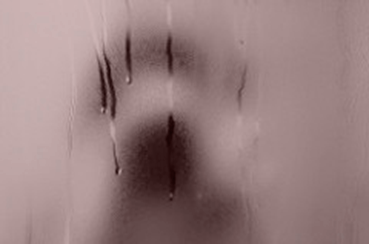
Claims circulate of strange images on steamy mirrors after seeing The Conjuring 2
Images have also been claimed as appearing on steamy mirrors in Singapore after seeing the film. One cinema-goer, Damian Ng Yih Leong has posted on Facebook images of a cross which appeared on a steamed up mirror in his hotel room – attributed to The Conjuring 2. However, a cleaning cloth rather than an exorcism might be advisable if encountering such a phenomenon.
These sorts of stories resemble those that circulated over forty years ago following the release of The Exorcist (1973) in the UK and North America, although so far no cinema has called in a minister to bless it, or claimed poltergeist effects have erupted in the toilets (audiences are a little more hardened in the Western world than in the 1970s). Similar reactions occurred in the 1930s with the stage version of Dracula in the 1930s, according to Bram Stoker biographer Harry Ludlam (see A Biography of Dracula: The Life Story of Bram Stoker (1962)).
Presuming the story from India to be accurate, it raises the possibility of dying of fright. This phenomenon is not fiction, though little studied and even less understood. There is anecdotal evidence of individuals ‘dying of fright’ found in many countries (numerous languages have an expression equivalent to ‘scared to death’) and many jurisdictions impose legal liability when death is occasioned by way of nervous shock.

A ghostly bear reputedly scared a sentry to death at the Tower of London in 1816
There are scattered stories of people expiring after seeing ghosts (for example a guardsman at the Tower of London who reputedly saw a phantom bear in 1816) but none reach the standards of evidence required by scientific psychical research. However, such a phenomenon might explain folkloric traditions of ghosts which are fatal to see or encounter, or which bode ill for the witness. More cogent evidence exists for the power of suggestion – often based on a perceived or imagined supernatural threat such as a curse or hex – triggering a fatal collapse (see Scared To Death (1967) by Dr J.C. Barker). One physiological effect arising from extreme fright may be the triggering of a fatal reaction in the heart. This has been recognised in a judicial context (see Murdie, Alan and Bardens, Dennis. (2003) ‘Scared to Death’ in New Law Journal 153 (7093): 1- 3).
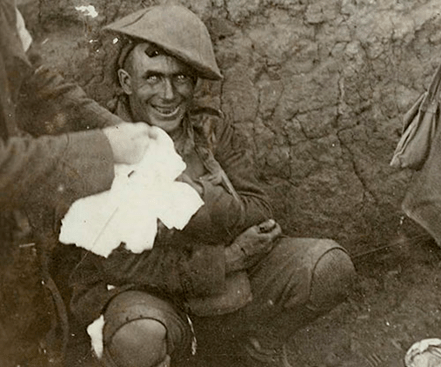
A similarity between war-time ‘shell-shock’ cases and alleged possession states was noted by British psychiatrist Dr William Sargent.
Studies into the effects of extreme stimulation on the mind and nervous system caused by fear or anxiety were conducted in both the First and Second World Wars, with medical and psychiatric investigations into ‘shell shock’ and combat stress amongst servicemen. Research in World War II led to a series of studies undertaken by the British psychiatrist Dr William Sargent (1907-1988) drawing parallels between the symptoms shown by servicemen and trance, possession and mystical states found in religious and ritual activities (Sargent, William, Battle for the Mind (1957) and The Mind Possessed (1973).
Even the crudest and feeblest of effects can work people into a state of hysterical collapse. During 1972 an actor was employed full‐time, as a ghost in a large hut at the end of a south coast pier in England His role entailed rigging up “scaring devices” for visitors to the ‘Haunted Gallery’ at 5p per head (about 65p today). To complete tour of the small building the people were subjected to a vision of a phantom head. This in fact was merely a luminous mask held by the employee and waved about in pitch darkness. His theatrical performance was accompanied by ghostly moans and shrieks, which apparently caused “an average of three people a week to collapse in a state of absolute terror”. What astounded the performer was that people actually paid to be sent into hysterics; he even had to take a first aid course to enable him to treat his victims. One of his last customers was a fifty‐year old woman who, on her bended knees, begged him, as the ghost, to leave her in peace. A middle aged policeman who had visited the establishment “for amusement” ended up by being treated for shock and the result was longer queues!
The devices that were constructed for the benefit of the customers, to set the scene, included wooden rollers of various sizes loosely fitted to the floor to act as “bones”, a large soft mattress as “bodies”, and a trap‐door (which opened only two inches) to the “raging sea below”. The atmosphere was created by pitch darkness and appropriately sited ultra‐violet spotlights illuminating various “portions of human bodies”.
It is amazing that sane individuals can have allowed common sense and logic to be dismissed so easily. A haunted building at the end of a pier in which the ghost only performed from 10 a.m. to 5.30pm should have hardly been credible to the most gullible, yet the results proved otherwise. The sound of the waves and the wind may well have added to the impact, contributing to feelings of disorientation and affecting the victims on a subliminal level. (See Ghost Hunting: A Practical Guide (2016) Andrew Green edited by Alan Murdie, forthcoming).
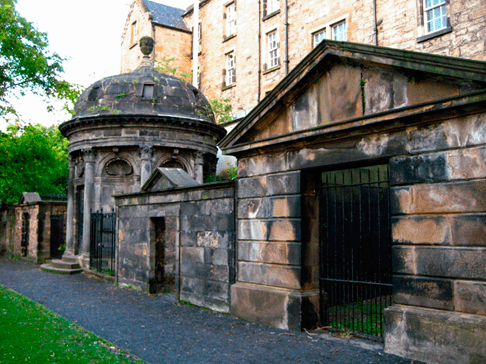
MacKenzie Mausoleum in the Greyfriars Kirkyard, Edinburgh
In 1999 there were claims about the MacKenzie Mausoleum in Edinburgh Greyfriars Kirkyard possessed a spook which assaulted, bit, bruised and scratched people. The Greyfriars Mausoleum was the tomb and memorial of ‘Bluidy Mackenzie’ an infamous 17th century Crown Prosecutor, Sir George Mackenzie of Rosenhaugh (1636-1691) known for his persecution of the Scottish Covenanters, many of whom were imprisoned next to Greyfriars cemetery. Aside from such 19th century children’s folklore nothing was recorded of any haunting at the mausoleum for more than 300 years after his death; in 1946 the roomy structure was actually used for storing furniture during a period of acute housing shortage in the city. However, in the late 1990s the Greyfriars cemetery became a routine stop for ghost tours operating in the city and thanks to various ghoulish pranks and antics, an atmosphere of hysteria was whipped up. It appears largely through suggestion a number of healthy people collapsed from stress and fear on entering the mausoleum, and a number exhibited physical symptoms attributed to the ‘MacKenzie Poltergeist’. Eventually, even the guides frightened themselves! The hysteria peaked with a serious desecration of the tomb, whereupon greater regulation led to more self-restraint and sanity returned. A book The Ghost That Haunted Itself was published in 2001 by Jan Andrew Henderson was published mid-way through the panic which helped dispel some of the myths associated with the story. (See Haunted Edinburgh (2006) by Alan Murdie).
On-line sources
http://jakarta.coconuts.co/2016/06/16/viral-moviegoer-supposedly-possessed-demon-after-watching-conjuring-2-bandung

